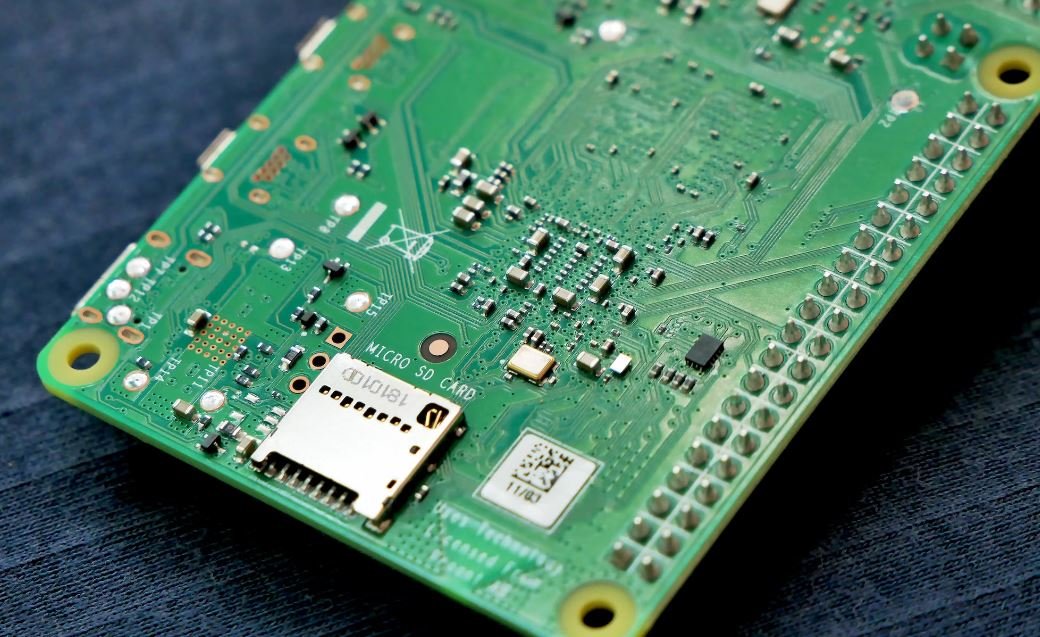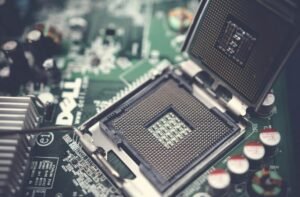How Machine Learning Is Different from Traditional Programming
Machine learning (ML) and traditional programming are two approaches to solving problems and achieving outcomes; however, they differ significantly in their methodologies and processes. While traditional programming involves explicit instructions and rules to process information, machine learning employs algorithms capable of automatically learning patterns and making predictions. This article explores how machine learning differs from traditional programming and highlights the key takeaways in understanding their distinctions.
Key Takeaways:
- Machine learning uses algorithms to learn patterns and make predictions automatically.
- Traditional programming requires explicit instructions and rules to process information.
- Machine learning is data-driven and relies on extensive training datasets.
- Traditional programming is rule-driven and operates based on pre-defined logic.
- Machine learning can handle complex and ambiguous scenarios that are challenging for traditional programming.
*Machine learning uses algorithms capable of automatically learning patterns and making predictions, whereas traditional programming requires explicit instructions and rules to process information.*
One of the fundamental differences between machine learning and traditional programming lies in the way they process information. In traditional programming, developers manually instruct the computer on how to process inputs and produce desired outputs. They design explicit algorithms and rules for the computer to follow step-by-step. On the other hand, machine learning algorithms learn from data and adjust their own internal parameters to identify patterns and make predictions without being explicitly programmed (although they still require programming to facilitate the learning process).
Machine learning algorithms rely on extensive training datasets to learn. These datasets contain a large number of labeled examples that help the algorithm understand the patterns and correlations in the data. The more diverse and representative the training data, the better the algorithm becomes at making accurate predictions. Traditional programming, however, does not require such substantial datasets for its functioning. It operates on predefined logic and rules, often relying on smaller sets of input and output samples.
The distinction between rule-driven traditional programming and data-driven machine learning becomes evident when considering their ability to handle complex and ambiguous scenarios. In traditional programming, if a developer encounters new data or a previously unknown scenario, they must explicitly define how the program should handle it. This requires intricate knowledge and consideration of numerous potential situations. In contrast, machine learning algorithms can handle such situations by learning from similar examples in the training data. They have the ability to adapt and generalize from the patterns learned, making them more flexible and suitable for complex environments.
Comparison of Machine Learning and Traditional Programming:
| Aspect | Machine Learning | Traditional Programming |
|---|---|---|
| Input Handling | Handles unstructured and large volumes of data with little pre-processing. | Requires data to be pre-processed and structured to match program requirements. |
| Adaptability | Can adapt and improve prediction accuracy over time by learning from new data. | Needs explicit modification by developers to handle changes in inputs or requirements. |
| Complexity | Capable of handling complex, ambiguous, and non-linear relationships. | Suitable for handling problems with well-defined rules and processes. |
*Machine learning algorithms can handle complex, ambiguous, and non-linear relationships, making them more flexible than traditional programming.*
Another essential difference is the level of complexity each method can handle. Machine learning algorithms excel at handling complex, ambiguous, and non-linear relationships between inputs and outputs. They can identify intricate patterns that may not be apparent to humans. In contrast, traditional programming is best suited for well-defined problems with clear rules and processes. It performs excellently when the problem domain can be explicitly defined and programmed.
In conclusion, machine learning and traditional programming are distinct in their methodologies, data requirements, and problem-solving capabilities. Machine learning involves the automatic learning of patterns and predictions through extensive training datasets, while traditional programming relies on explicit instructions and predefined logic. Machine learning can handle complex and ambiguous scenarios, adapting and improving over time, whereas traditional programming is preferable for well-defined problems with explicit rules. Understanding these differences is crucial for determining the most appropriate approach for solving a given problem.

Common Misconceptions
Machine Learning Is Different from Traditional Programming
Paragraph 1: Understanding the Difference
Many people mistakenly believe that machine learning is just another form of traditional programming. However, there are significant differences between the two:
- Machine learning utilizes algorithms that allow computers to learn and improve from data without being explicitly programmed.
- Traditional programming follows a deterministic approach, where every step and outcome is known in advance.
- Machine learning involves training models to make predictions or take actions based on patterns and insights discovered in large datasets.
Paragraph 2: Complexity and Adaptability
Another common misconception is that traditional programming is more complex than machine learning. However, this is not necessarily the case:
- Machine learning models can handle complex patterns in data, making them suitable for tasks like image and speech recognition.
- Traditional programming, on the other hand, requires explicit instructions for each possible input and output, making it more time-consuming for complex tasks.
- Machine learning models are also more adaptable, as they can be trained on new data to improve performance, while traditional programs typically require manual updates for changes.
Paragraph 3: Black Box Perception
Many people assume that machine learning models are like black boxes, where the rationale behind their decisions is obscure. However, this is often a misconception:
- Machine learning models can be designed to provide explanations for their predictions, ensuring transparency and accountability.
- Many techniques, such as feature importance analysis and model interpretation methods, can shed light on why certain decisions are made.
- While some complex models may be harder to interpret, efforts are being made in the field to improve transparency and interpretability.
Paragraph 4: Data Dependency
One of the key differences between traditional programming and machine learning is the strong dependency on data in the latter:
- Machine learning models require a large amount of labeled data for training, which can be a time-consuming and expensive process.
- Traditional programming may rely on predefined rules and logic, rather than extensive datasets, making it a more feasible option in certain scenarios.
- Data quality and diversity are crucial for the effectiveness and fairness of machine learning models, making data management an integral part of the process.
Paragraph 5: Iterative Improvement
Lastly, another misconception is that machine learning models can provide immediate optimal solutions, similar to traditional programming:
- Machine learning often involves an iterative process, where models are trained, evaluated, and refined multiple times to improve performance over time.
- Traditional programming, on the other hand, aims to provide deterministic solutions from the start, without the need for continuous improvement.
- Machine learning applications require ongoing monitoring and maintenance to ensure accuracy and adapt to changing conditions.

What is Machine Learning?
Machine learning is a subset of artificial intelligence that involves the use of algorithms and statistical models to enable computers to learn and make predictions or decisions without being explicitly programmed. Unlike traditional programming, where rules and instructions are provided in advance, machine learning systems improve their performance by learning from data and iteratively refining their models. This table showcases some key differences between machine learning and traditional programming:
Data
| Traditional Programming | Machine Learning |
|---|---|
| Structured data is primarily used. | Data can be structured, unstructured, or semi-structured. |
| Input and output data are explicitly defined. | Learning algorithms discover meaningful patterns in the data. |
| Data is not typically used to improve program performance. | Continuous learning from data improves model accuracy over time. |
Development Process
When comparing the development processes of machine learning and traditional programming, several distinctions come to light:
| Traditional Programming | Machine Learning |
|---|---|
| Design an algorithm based on predefined rules. | Choose an appropriate algorithm and a training method. |
| Debug and fix errors during program development. | Analyze and iteratively improve model performance over time. |
| Maintenance involves modifying code directly. | Models can be updated easily by retraining them on new data. |
Output
Let’s delve into the differences in output between machine learning systems and traditional programming:
| Traditional Programming | Machine Learning |
|---|---|
| Exact output is determined by the coded instructions. | Predictions or decisions are based on learned patterns. |
| Less adaptable to changing data or conditions. | Adapts to new data through continuous learning. |
| May not handle complex or uncertain real-world problems well. | Can handle complex and uncertain problems with flexibility. |
Required Expertise
The skill sets required for machine learning and traditional programming are different:
| Traditional Programming | Machine Learning |
|---|---|
| Proficiency in programming languages like Java, C++, etc. | Strong understanding of statistics, probability, and linear algebra. |
| Domain-specific knowledge for program development. | Knowledge of feature engineering, model selection, and evaluation. |
| Limited understanding of data analysis techniques. | Ability to preprocess and interpret large volumes of data. |
Error Handling
We can witness differences in error handling approaches between machine learning and traditional programming:
| Traditional Programming | Machine Learning |
|---|---|
| Errors can be easily identified and fixed during development. | Models may produce errors due to incorrect predictions or decisions. |
| Errors are typically caused by bugs in the code. | Errors can be inherent in the training data or model assumptions. |
| Testing helps identify and rectify program flaws. | Testing is essential to assess model performance and generalization. |
Feedback System
Machine learning and traditional programming differ in their feedback systems:
| Traditional Programming | Machine Learning |
|---|---|
| Feedback is inputted manually through code modifications. | Feedback is captured by monitoring the model’s performance. |
| Immediate feedback loops are less common. | Immediate feedback enables models to adapt and improve. |
| User feedback plays a crucial role in feature enhancements. | User feedback can be used to retrain models and improve accuracy. |
Application Range
The application range of machine learning and traditional programming varies:
| Traditional Programming | Machine Learning |
|---|---|
| Best suited for rule-based, deterministic tasks. | Effective for handling complex, data-driven problems. |
| Less adaptive to dynamic or changing environments. | Capable of adapting to new circumstances and data patterns. |
| Widely used in software development across different domains. | Increasingly integrated into numerous real-world applications. |
Computational Speed
Machine learning and traditional programming differ in their computational speed:
| Traditional Programming | Machine Learning |
|---|---|
| Computation time is mainly dependent on code complexity. | Computation time increases with larger datasets and more complex models. |
| Efficient algorithms can process data relatively quickly. | Training and inference times can be significantly longer. |
| Suitable for situations requiring real-time responses. | May not be feasible for real-time systems or time-critical tasks. |
Model Interpretability
Machine learning and traditional programming differ in the interpretability of their models:
| Traditional Programming | Machine Learning |
|---|---|
| Easier to analyze and explain the behavior of a deterministic program. | Complexity of models can make interpretation challenging. |
| Program structure provides clear explanations. | Black-box models might not offer clear insights into decision-making. |
| Debugging and resolving issues is relatively straightforward. | Debugging and identifying problems are more complex tasks. |
Machine learning and traditional programming represent distinct approaches to problem-solving. While traditional programming relies on predefined rules, machine learning leverages data to learn and improve performance over time. This inherent flexibility allows machine learning to handle complex tasks and adapt to changing circumstances more effectively. However, the interpretability of machine learning models and the need for large datasets are challenges that need to be addressed. As technology advances, the integration of machine learning into various applications continues to expand, enhancing our ability to solve real-world problems.
Frequently Asked Questions
What is machine learning?
Machine learning is a branch of artificial intelligence that focuses on developing algorithms and models that can learn and make predictions or decisions without being explicitly programmed.
How does machine learning differ from traditional programming?
In traditional programming, explicit rules and instructions are written by human programmers to solve specific problems. Machine learning, on the other hand, enables computers to learn from data and improve their performance over time without being explicitly programmed.
What are the key components of machine learning?
The key components of machine learning include algorithms, data, and models. Algorithms are used to train machine learning models using data, and these models can then make predictions or decisions based on new or unseen data.
What types of problems can be solved using machine learning?
Machine learning can be applied to a wide range of problems, including image recognition, natural language processing, fraud detection, recommender systems, speech recognition, and more.
How is data used in machine learning?
Data is essential in machine learning as it is used to train models and make predictions or decisions. High-quality and representative data is required to ensure the accuracy and reliability of machine learning models.
What are the benefits of using machine learning?
Machine learning offers several benefits, including the ability to make predictions or decisions with high accuracy, automate repetitive tasks, discover hidden patterns or insights in data, and adapt to changing environments or data.
Do machine learning models always provide accurate results?
No, machine learning models may not always provide accurate results. The accuracy of the predictions or decisions depends on the quality of the data, the algorithm used, and other factors like the complexity of the problem being solved.
Can machine learning models learn from their mistakes?
Machine learning models can learn from their mistakes by iteratively adjusting their parameters or updating their models based on feedback or new data. This process is known as training or learning.
What is the role of feature engineering in machine learning?
Feature engineering involves selecting or creating relevant features from the given data that can help improve the performance of machine learning models. This step is crucial in maximizing the model’s ability to learn and make accurate predictions.
How can machine learning models be evaluated?
Machine learning models can be evaluated using various metrics such as accuracy, precision, recall, F1 score, and area under the curve (AUC). These metrics help assess the performance of the models and compare them against each other.




